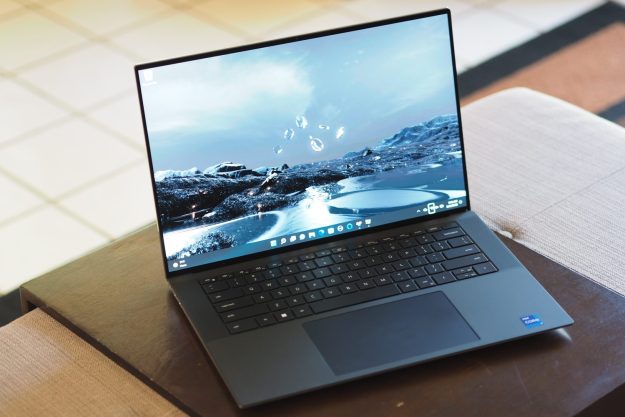Our expert laptops have tested and reviewed more than 500 laptops over the years, searching for the best of the best. But to earn the crown as the best laptop in 2023, it needs to have it all: gorgeous design, killer performance, a productive keyboard, long-lasting battery life, and much more.
Each of the laptops below has been vetted thoroughly by us here at Digital Trends. Whether it's an affordable Chromebook or a top-of-the-line gaming laptop, they've all been subjected to real-world testing, as well as benchmark and battery tests, to collect data to objectively pit them against each other.

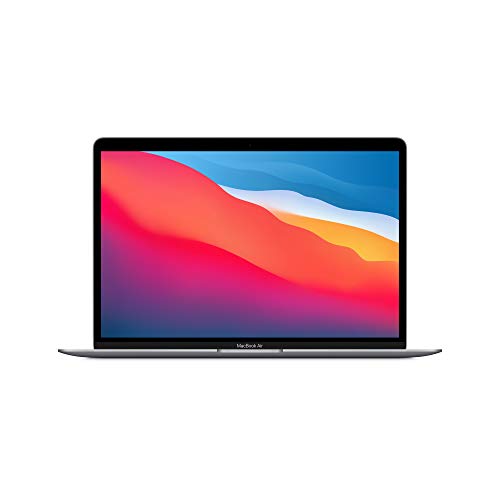

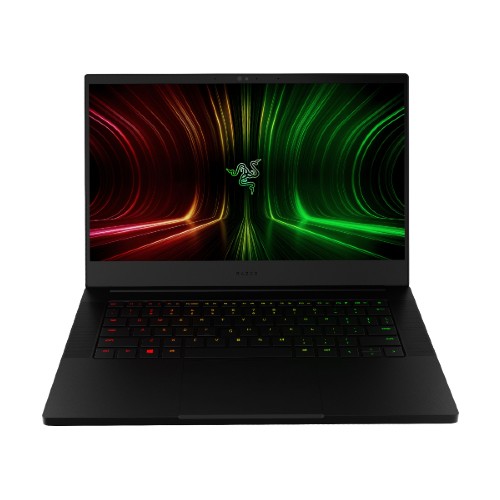
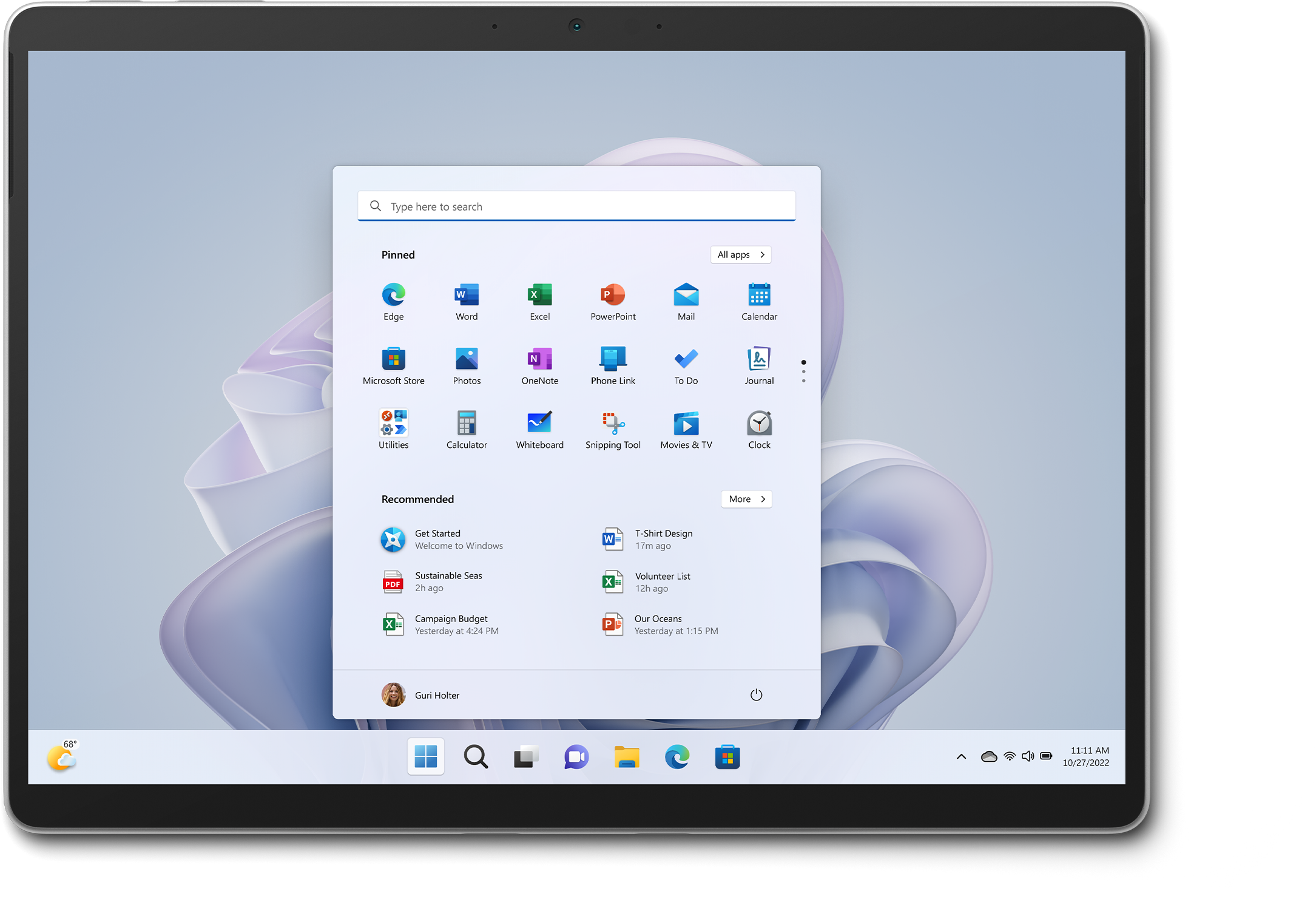




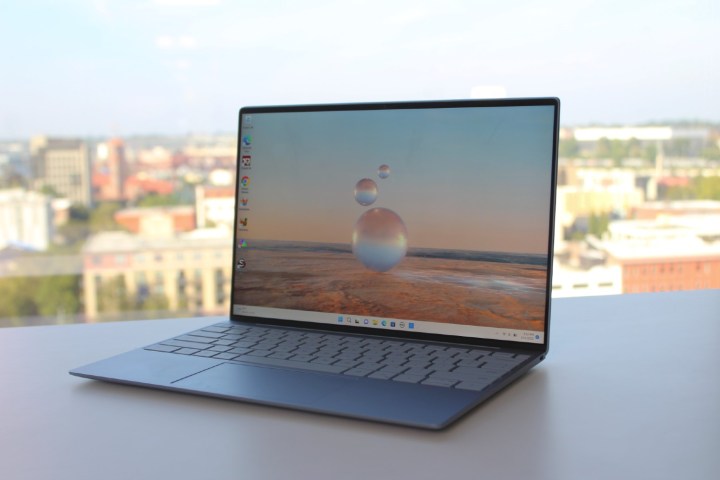
Best Laptop
Dell XPS 13 (9315)
| Specifications | |
|---|---|
| CPU: | Intel Core i5-1230U |
| RAM: | 8GB |
| GPU: | Intel Xe Graphics |
| Screen: | 13.4-inch 1920 x 1200 IPS |
| Storage: | 256GB SSD |
| Dimensions: | 11.63 x 7.85 x 0.55 inches |
There are two things you need to know about the Dell XPS 13 before buying one. First, it doesn't have a headphone jack. Second, its performance is a bit lackluster compared to many of the latest 12th-generation Intel-powered laptops.
With those downsides in mind, that might make you wonder why a laptop like this is still showing up on this list at all. Well, it really all comes down value. If you can set those two negatives aside, you'll find a gorgeous little laptop priced like none other. The base configuration tends to fluctuate in price, but it ranges between $749 and $999, making it the cheapest the XPS laptops have ever sold for. Keep in mind, you're getting 512GB of storage in that model, too. That makes a lot of laptops on this list seem overpriced, especially considering how good the battery life and display are. That's even true sitting next to the M1 MacBook Air. It's a fantastic value — so long as you can accept the lack of a headphone jack.
Of course, you'll also find a laptop here with premium features, such as a comfortable keyboard, a great touchpad, and a killer IPS screen. And, of course, the design is stellar. The compact little 13-inch laptop continues to have remarkably thin bezels, and the new color options are both unique and tasteful. It's very hard to find a laptop under $1,000 that hits all those marks, especially without sacrificing anything major.
You might wonder why we've included the XPS 13 on the list rather than the XPS 13 Plus. After all, the Plus model is more powerful and has some really excellent features, such as the seamless haptic feedback trackpad and the larger, edge-to-edge keyboard. Those features are all neat and certainly make it a futuristic-feeling laptop, but we're not sure they're worth the extra cost over the standard XPS 13, which comes in hundreds of dollars cheaper.
Read our Dell XPXS 13 (9315) review.

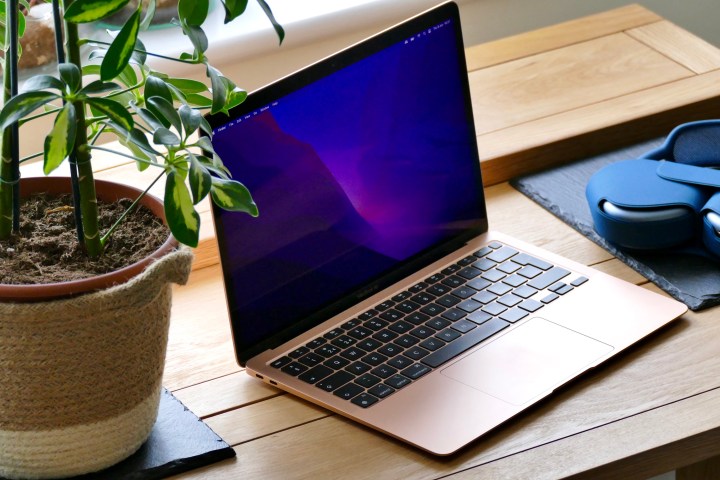
Best MacBook
Apple MacBook Air M1
| Specifications | |
|---|---|
| CPU: | Apple M1 Chip |
| RAM: | 8GB |
| GPU: | Apple M1 8-Core |
| Screen: | 13.3-inch Retina |
| Storage: | 256GB SSD |
| Dimensions: | 11.97 x 8.36 x 0.63 inches |
The M1 MacBook Air is a nearly 2-year-old laptop, yet it remains at the top of our list for the incredible value provided by this little MacBook.
The M2 MacBook Air is a flashier design. No doubt about it. It's a bit more powerful, too. But the M1 MacBook Air remains a mind-boggling good value for the amount of laptop on offer — that includes great performance, battery life, and much more. We won't begrudge for buying the admittedly solid M2 MacBook Air over the M1; just know that the M1 model is still the better deal.
Chalk it up to the game-changing nature of the M1 chip, which transformed this otherwise plain MacBook into one of the most important laptops of the past decade. Before the M1 MacBook Air, laptops in this line were painfully underpowered. They just weren't capable enough to get real work done for most people. But with the M1, the MacBook Air is not only impressively powerful again, but it also stays completely fanless and gets insane amounts of battery life. Two years later, and there are still no Windows laptops that can compete in that regard. That's how important the power efficiency of ARM-based chips is.
The only real downside to the M1 MacBook Air is its external monitor support. Despite coming with two USB-C ports and a MagSafe 3 charging port, the M1 MacBook Air can only connect to a single external monitor. For many people, that will rule out this laptop device entirely. But if you're a college student or just prefer to do a lot of your work on the go, the M1 MacBook Air is a shocking amount of laptop for the money. If you can catch it when it's on sale (which it often is), that's even better.
Read our Apple MacBook Air M1 review.

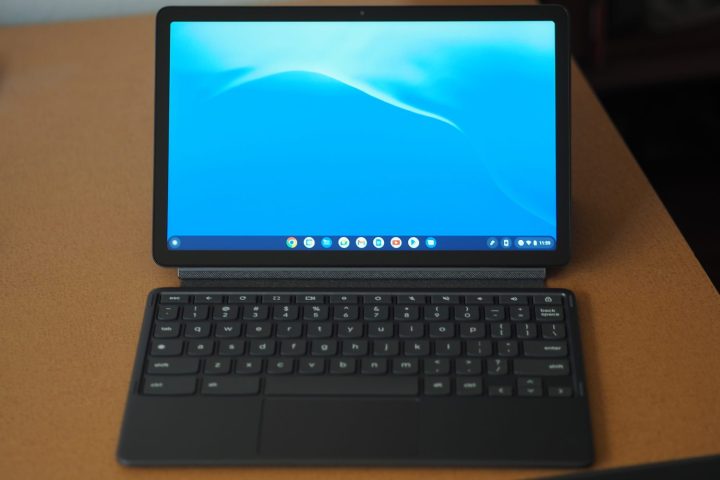
Best Chromebook
Lenovo Chromebook Duet 3
| Specifications | |
|---|---|
| CPU: | Snapdragon 7cG2 |
| RAM: | 4GB |
| GPU: | N/A |
| Screen: | 11-inch 2000 x 1200 |
| Storage: | 128GB eMMC |
| Dimensions: | 10.16 x 6.57 x 0.3 inches |
Laptops that cost $300 shouldn't be this good. Seriously. Most laptops you can buy at that price have serious deficiencies, like pitiful performance or awful 720p screens. That's often true, even on Chromebooks.
But the Lenovo Chromebook Duet 3 manages to deliver a great laptop experience, albeit on a very small device. But this little 10.9-inch is perfect for students or anyone who just needs a compact device to take on the go. The screen resolution is even better than 1080p, reaching up to 2000 x 1200. That's very sharp for a screen of this size, making it excellent for writing and reading text. It even gets up to 400 nits of brightness, meaning working near windows isn't an issue. Again, this is unheard of for a laptop of this price.
Surprisingly, the Lenovo Chromebook Duel 3 also comes with a 5-megapixel camera for solid videoconferencing. It has just about everything it needs to compete with the iPad (especially with the recent price jump). The iPad is undoubtedly a better tablet. It's lighter and has a wide range of gestures and apps to support touch-only controls. The Lenovo Chromebook Duet 3 will disappoint you in that regard, even with support for Android apps. But that's nothing new for ChromeOS tablets.
The Lenovo Chromebook Duet 3 excels, though, as a work or school device. As good as iPads have become at doing work, if you're needing to do actual work or school work, having a normal desktop browser and a full keyboard goes a long way toward being more efficient. The magnetic back cover also gives the tablet a kickstand for lots of angles, and you can even bundle in the Lenovo Digital Pen for stylus use.
Read our Lenovo Chromebook Duet 3 review.

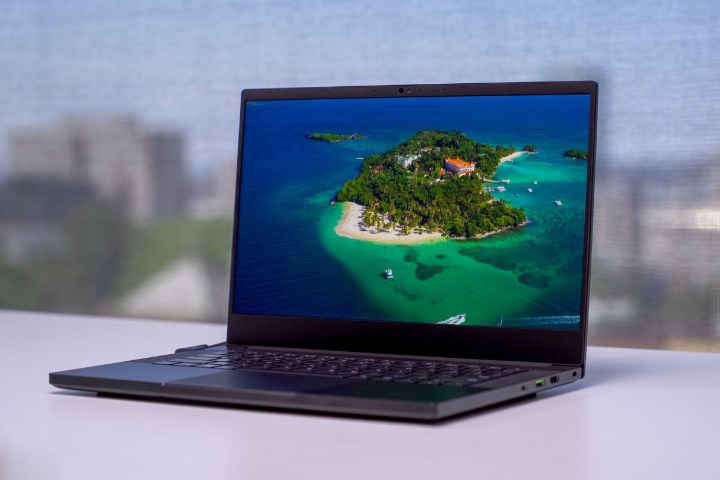
Best Gaming Laptop
Razer Blade 14
| Specifications | |
|---|---|
| CPU: | AMD Ryzen 9 5900HX |
| RAM: | 16GB |
| GPU: | Nvidia GeForce RTX 3080 |
| Screen: | 14-inch QHD 165Hz refresh rate |
| Storage: | 1TB SSD |
| Dimensions: | 12.59 x 8.66 x 0.66 inches |
Gaming laptops are their own class of laptop that demand their own list, but we wanted to include some here that could easily double as your standard laptop -- of course, with the added benefit that these can do some serious gaming after work.
The Razer Blade 14 might be the best example of such a premise. In many ways, it doesn't feel like it shouldn't be possible. Up to an RTX 3080 in a thin, 14-inch laptop? Yep, that's right. And it does it with some pretty impressive performance, too. It comes with a 1440p screen with a 165Hz refresh rate, ensuring that you're never bottlenecked by the display. Then again, the 1080p model comes with an RTX 3060 and manages to land under $2,000, which is a rare feat for a Razer laptop. This also just happens to be the only AMD Ryzen-powered Razer Blade 14, which is why this gets the best battery life of any gaming laptop we've tested.
Yes, this bad boy's expensive. But what you're paying for is the ability to switch between work and play without batting an eye. The Razer logo on the lid and the per-key RGB backlighting might catch some attention at the office, but hey, this is a gaming laptop through and through.
There will always be room for larger gaming laptops like the Razer Blade 15 or Lenovo Legion 5 Pro, but the Razer Blade 14 still feels like a miracle. It's the first AMD-powered Razer laptop, featuring the powerful Ryzen 9 5900HX. It also sports a 1440p 240Hz screen, ensuring that you're never bottlenecked by the display. Amazingly, the Razer Blade 14 does all this at a few hundred dollars cheaper than the Razer Blade 15.
But no, it's not the cheapest gaming laptop. Nor is it the most powerful. It is, however, the best overall gaming laptop you can buy, especially if you want something small and portable.
Read our Razer Blade 14 review.

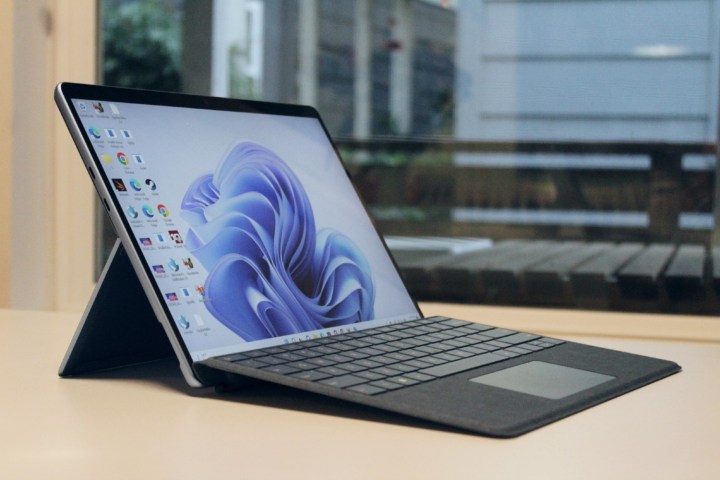
Best 2-in-1 Laptop
Microsoft Surface Pro 9
| Specifications | |
|---|---|
| CPU: | Intel Core i5 |
| RAM: | 8GB |
| GPU: | Built-in |
| Screen: | 13-inch PixelSense Flow |
| Storage: | 128GB SSD |
| Dimensions: | 11.3 x 8.2 x 0.37 inches |
For many years, the Surface Pro was all on its own. Other manufacturers had given up on the 2-in-1 form factor, and Windows wasn't doing much to improve touch interfaces. But that changed this year when multiple new Surface Pro-like devices were released, no doubt thanks to the momentum Microsoft is building with Windows 11.
That means the Surface Pro 9, the latest model in the line, has some serious competition. But even with challengers like the Dell XPS 13 2-in-1 available, the Surface Pro 9 remains on top. Microsoft has been perfecting this hardware for years now, and it shows. The buttery smooth 120Hz display is a highlight, especially with the thin bezels introduced in last year's model. Microsoft has a more polished product, and even though it asks for more money, the product experience is totally worth it.
Interestingly, though, the Surface Pro 9 is also the first to offer both an Intel model and an ARM configuration. The ARM model uses the Microsoft SQ3, the company's latest collaboration with Qualcomm, and you might be wondering if it's finally become a better option than the more conventional Intel model. It certainly gets more battery life, and the addition of 5G connectivity is a bonus. But if performance is what you're looking for, the Intel model is still the way to go, especially since these latest 12th-gen chips bring quite a performance jump over last year's generation.
As it stands, that's the way most people should go, though we wouldn't blame you for wanting to try something new with the SQ3 model. It seems like many companies want ARM to be the future of Windows PCs, and portable 2-in-1 devices seem like a category ripe for more efficient chips.
Read our Microsoft Surface Pro 9 review.


Best Business Laptop
Lenovo ThinkPad Z13
| Specifications | |
|---|---|
| CPU: | AMD Ryzen 5 Pro 6650U |
| RAM: | 16GB |
| GPU: | Integrated AMD Radeon 660M |
| Screen: | 13.3-inch IPS |
| Storage: | 512GB SSD |
| Dimensions: | 11.59 x 7.85 x 0.55 inches |
Business laptops don't have to be boring, and the ThinkPad Z13 proves it. Its faux-leather lid looks unique while still feeling classy, with just enough touches across the chassis to feel modern. Not that you need to work for a big company to love what the ThinkPad Z13 has to offer. The ThinkPad Z13 is the kind of business laptop that the average person would likely be delighted to use — so long as you appreciate the ThinkPad brand and buttoned-up aesthetic.
Of course, the ThinkPad Z13 is more than just an interesting-looking new laptop. It's one of the best laptops to run on AMD's new Ryzen 6000 chips, which provide excellent performance and long-lasting battery life. Yes, the security features come baked-in too, but it's the battery life that really sold us on these chips. With MacBooks leading the charge in battery life, it's great to see a Windows option that lasts almost as long that doesn't have an Apple logo plastered to the lid.
The ThinkPad Z13 also includes a 1080p webcam that produces some solid results for videoconferencing. That's as important as ever, and Lenovo's design even highlights the feature with its brushed metal Communication Bar. It's a significant jump up in clarity and sharpness over older laptops with 720p and follows the trend of improving image quality for remote work. There's even an OLED model if you really want to take the screen to the next level, though we found the cheaper IPS display to be solid on its own.
All of it comes together in a package that feels both unique and appropriate for the office, which is especially hard to pull off at this price. Unlike many high-end business laptops and ThinkPads in general, the ThinkPad Z13 isn't extravagantly overpriced, which makes the excellent performance, battery life, and features even more noteworthy.
Read our Lenovo ThinkPad Z13 review.

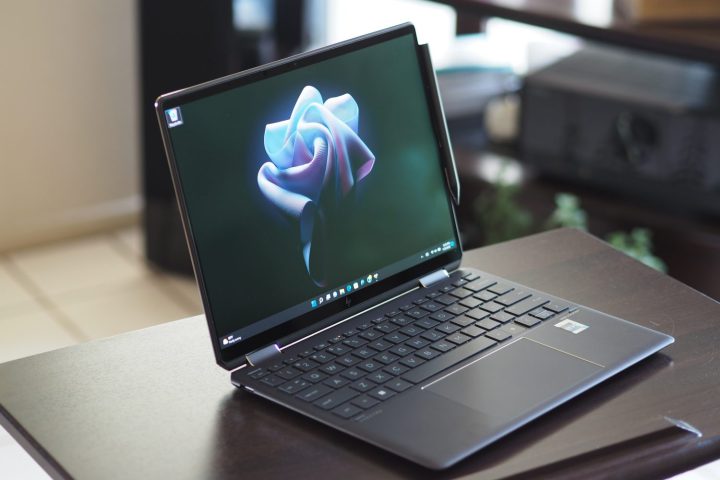
Best HP Laptop
HP Spectre x360 13.5
| Specifications | |
|---|---|
| CPU: | Intel Core i5-1235U |
| RAM: | 16GB |
| GPU: | Intel Iris Xe |
| Screen: | 13.5-inch touchscreen |
| Storage: | 512GB SSD |
| Dimensions: | 14.21 x 9.84 x 0.76 inches |
Competition for thin and light laptops with 13-inch screens has never been tighter. But that's a great thing for laptop buyers, now with so many excellent choices such as the HP Spectre x360 13.5.
The HP Spectre x360 series of convertible laptops have long been among our favorites. But the Spectre x360 13.5 is the best of the line in a very long time. It brings together a unique yet elegant sense of style with high-end components such as its stunning OLED display and great battery life. It doesn't have the same weaknesses in ports (it has a headphone jack!) and performance as the XPS 13, either. This is a plenty-fast machine for your work needs, even when using it as a dock to connect to multiple external monitors — though, if it's discrete graphics you want, you'll want to opt for the Spectre x360 14.
The only complaint is that it's a bit more expensive than we'd like, especially compared to new options like the Dell XPS 13 or the M1 MacBook Air. HP prices the Spectre x360 quite high, and in a world where Apple's MacBooks continue to push the boundary of what's possible in terms of battery life and performance, it's been increasingly hard for Windows laptops to compete — especially if they're not being priced down appropriately.
Fortunately, HP does have a cheaper option in the Envy x360 13, which uses the same form factor but comes in well under $1,000. Like the XPS 13, the Envy x360 does a fantastic job undercutting the M1 MacBook Air in terms of the value it offers.
But if the premium look is what you want, the Spectre 360 x360 13.5 delivers in a big way. It's the complete package — and sometimes, that's worth paying for.
Read our HP Spectre x365 13.5 review.

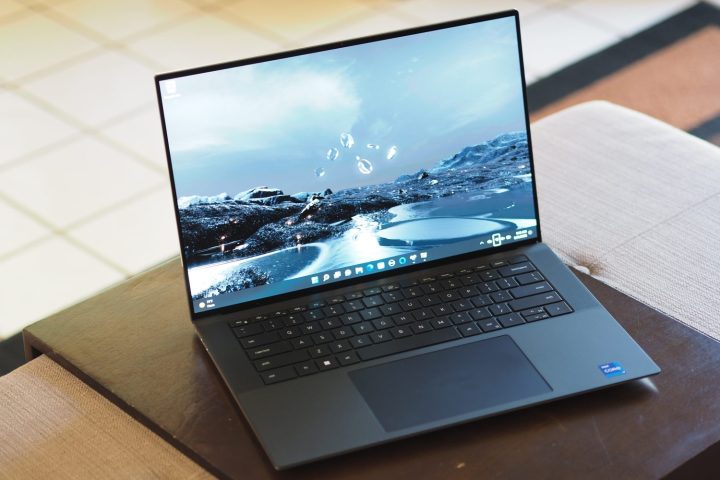
Best MacBook Pro Alternative
Dell XPS 15 (9520)
| Specifications | |
|---|---|
| CPU: | Intel Core i5-12500H |
| RAM: | 16GB |
| GPU: | Intel Iris Xe |
| Screen: | 15.6-inch full HD |
| Storage: | 512GB SSD |
| Dimensions: | 13.56 x 9.06 x 0.73 inches |
Truthfully, it's hard for a laptop like the Dell XPS 15 to compete with the MacBook Pro 16-inch. Performance is similar, but the MacBook Pro wins in almost every other category, from the port selection to the screen, even with more minor features like the speakers or webcam. And that's not to mention battery life, where the MacBook Pro is in another league.
But Macs aren't for everyone. Many applications or organizations require Windows — and hey, many of us just straight-up prefer it. Content creators need a solid option that is as premium as the MacBook Pro while still providing excellent performance. And that's where the Dell XPS 15 comes into play.
This is a gorgeous laptop, still using the carbon-fiber weave texture across the keyboard deck and palm rests. That may change in the coming years to align with the XPS 13 and XPS 13 Plus, but for now, we love the look and design. And despite having a 15-inch screen, the overall size of the XPS 15 is far smaller than the bulky 15-inch laptops of yesteryear. That's thanks to the tiny bezels, of course.
It even comes with four powerful Thunderbolt ports and a full-size SD card slot for convenient transfers directly from your camera. But the performance is what really counts for video-editing laptops. Between the 12th-generation Core i9 processor and a Nvidia RTX 3050 Ti, the Dell XPS 15 is one of the most powerful consumer-class content-creation laptops we've ever tested.
If you don't need all that extra performance, Dell even offers cheaper versions of the XPS 15 that don't come with discrete graphics, though you may want to consider thinner and cheaper devices that aren't meant for heavy loads, such as the LG Gram 16, Surface Laptop 5 15, or even Dell's own Inspiron 16.
Read our Dell XPS 15 (9520) review.


Best Laptop for Photo and Video Editing
MacBook Pro 16-inch
| Specifications | |
|---|---|
| CPU: | Apple M1 Pro |
| RAM: | 16GB |
| GPU: | Apple M1 Pro |
| Screen: | 16-inch Retina |
| Storage: | 512GB SSD |
| Dimensions: | 9.77 x 14.01 x 0.66 inches |
The MacBook Pro 16-inch has fixed a lot of the problems with the "Pro" line in the past few years. The Touch Bar is gone. The extensive port selection is back. It's even thicker and better-cooled now.
But it's more than just an apology tour. The 120Hz mini-LED screen is the best laptop screen we've ever seen, especially when viewing HDR content. The M1 Pro and M1 Max, meanwhile, add discrete-level graphics to the incredible efficiency of the M1. Heck, we even tested out HDR gaming on this screen in Resident Evil Village — and it's astounding. We're not saying this is a proper gaming laptop, but the hardware is certainly there to support it.
And then there's the battery life. It's one thing for a smaller laptop like the MacBook Air to get world-class battery life, but we didn't expect that with the larger and more powerful 16-inch MacBook Pro. To our surprise, this thing lasts for just as long. Many Windows laptops with discrete graphics, such as the Dell XPS 15 or the Razer Blade 15, only get four or five hours of battery life. The 16-inch MacBook Pro can last over 18 hours in those same tests. Let that sink in.
On top of that, there are a number of quality-of-life enhancements to the MacBook Pro this time around, such as the improved 1080p webcam and even bassier speakers, both of which are best-in-class.
The price and performance mean it's not for everyone, though. The average person doesn't need more than the MacBook Air. But if you need a powerful laptop for content creation, the MacBook Pro is the best "pro" laptop you can buy. The 14-inch model is equally good, but stay clear of the M2 MacBook Pro 13-inch, which uses an outdated chassis and won't bring the pro-level performance you're looking for.
Read our MacBook Pro 16-inch review.

Frequently Asked Questions
Picking just one laptop brand as the best is a bit of a challenge lately. There are so many great laptops available today, and they come from several manufacturers. Hold our feet to the fire, though, and it's hard not to look at what Apple is doing with its MacBooks these past couple of years and stand in awe. The transition to Apple Silicon has been pretty effortless, and the flagship resulting laptops have been game-changers.
But apart from Apple, we'll look at Dell, HP, and Lenovo leading the game in premium designs, refreshing new technology, and a wide-ranging span of laptops to choose from. Lenovo's ThinkPads are a powerhouse in the business world, while Dell's XPS brand has become iconic for its innovative approach to design.
Asus isn't far behind with its Zenbook and ROG Zephyrus lines, though, often producing some of the most cutting-edge and inventive laptops on the market.
A 2-in-1 laptop is one that isn't limited to the traditional clamshell configuration. Instead, a 2-in-1 can convert from a clamshell into some form of tablet PC that allows for natural inking and media consumption.
The concept isn't brand-new — Microsoft sold a "Tablet PC" version of Windows as far back as 2001 that supported pen input, but it never caught on. As electronics have gotten more powerful and fit into smaller chassis, and capacitive touch and active pen technology have improved, the modern 2-in-1 has emerged. Microsoft kicked off the form factor with its Surface line in 2012, and most manufacturers followed with their versions.
Today, you can pick from among a variety of different kinds of 2-in-1s. The most popular types are the tablet with a detachable keyboard, epitomized by the Microsoft Surface Pro 9, and the 360-degree convertible where the display flips around to turn into a (usually larger) slate, such as the HP Spectre x360 13.5.
The main advantage of the tablet 2-in-1 is portability — tablets are extremely thin, light, and easy to carry around — while they also work best for drawing and taking notes on the pen-enabled display. The 360-degree convertible 2-in-1, on the other hand, isn't quite as handy as a tablet, but it tends to work better in clamshell laptop mode — especially when using it on the lap, where it's more stable than most detachable tablets.
Laptop processors can be very difficult to distinguish from each other. When we're talking about Intel chips, what's most important isn't deciding between Core i5 and Core i7 — it's the letter name that proceeds the string of numbers. This letter name, whether H, P, or U, will tell you how much power the chip can draw, which greatly affects performance. So, if you need something for gaming, video editing, or any other demanding task, you'll want something with a 45-watt H-series processor, such as the Core i7-12700H or Core i9-12900H. Laptops with these chips are very powerful and expensive but often don't get very good battery life and come in a large chassis.
The U-series chips sit on the opposite side of the spectrum, while the P-series balances in the middle.
While Intel-powered laptops are certainly the most widespread, you'll also come across options from AMD. AMD's chips from its most recent Ryzen 6000 are also excellent, often getting better multicore performance, integrated graphics, and battery life than its Intel competitors. The one caveat is that if you're working primarily in the Adobe Creative Suite, you'll still get better performance from an Intel laptop due to the optimizations made through the software.
8GB of RAM is often the starting place for base configurations, and that's enough if your needs are fairly basic. But if your work involves heavy multitasking with multiple monitors, dozens of Chrome tabs, and video streaming, you'll likely start getting bottlenecked by that amount of memory.
If that's you, 16GB is a better option. Very few people should need the bump to 32GB or 64GB, reserved only for the most demanding users.
As we mentioned above, you can get a tablet that can morph into a laptop just by attaching a keyboard. And so, if you really want the power of Windows in a form factor that's easier to carry around, then you can select a tablet 2-in-1. With the advent of Windows 11, it's finally starting to become a better software platform for tablets. If you want the utmost in simplicity and an even smaller device, then a pure tablet like the iPad can be great for web browsing, triaging email, consuming media, and other tasks that don't require the full power of a "real" PC.
So, where doesn't a tablet work? If you're a hardcore gamer, need a laptop that can churn through video and huge photos, or do a lot of multitasking. Tablets are very thin and tend to use slower CPUs and integrated graphics that won't accelerate creative applications or power modern games. Meanwhile, the software on these devices isn't as full-featured as a desktop operating system like Windows 10 or macOS.
Best Laptops Compared
| Dell XPS 13 (9315) | MacBook Air M1 | Lenovo Chromebook Duet 3 | Razer Blade 14 | Microsoft Surface Pro 9 | Lenovo ThinkPad Z13 | HP Spectre x360 13.5 | Dell XPS 15 (9520) | MacBook Pro 16-inch | |
|---|---|---|---|---|---|---|---|---|---|
| CPU: | Intel Core i5-1230U | Apple M1 Chip | Snapdragon 7cG2 | AMD Ryzen 9 5900HX | Intel Core i5 | AMD Ryzen 5 Pro 6650U | Intel Core i5-1235U | Intel Core i5-12500H | Apple M1 Pro |
| RAM: | 8GB | 8GB | 4GB | 16GB | 8GB | 16GB | 16GB | 16GB | 16GB |
| GPU: | Intel Xe Graphics | Apple M1 8-Core | N/A | Nvidia GeForce RTX 3080 | Built-in | Integrated AMD Radeon 660M | Intel Iris Xe | Intel Iris Xe | Apple M1 Pro |
| Screen: | 13.4-inch 1920 x 1200 IPS | 13.3-inch Retina | 11-inch 2000 x 1200 | 14-inch QHD 165Hz refresh rate | 13-inch PixelSense Flow | 13.3-inch IPS | 13.5-inch touchscreen | 15.6-inch full HD | 16-inch Retina |
| Storage: | 256GB SSD | 256GB SSD | 128GB eMMC | 1TB SSD | 128GB SSD | 512GB SSD | 512GB SSD | 512GB SSD | 512GB SSD |
| Dimensions: | 11.63 x 7.85 x 0.55 inches | 11.97 x 8.36 x 0.63 inches | 10.16 x 6.57 x 0.3 inches | 12.59 x 8.66 x 0.66 inches | 11.3 x 8.2 x 0.37 inches | 11.59 x 7.85 x 0.55 inches | 14.21 x 9.84 x 0.76 inches | 13.56 x 9.06 x 0.73 inches | 9.77 x 14.01 x 0.66 inches |
How we test laptops
You’ve read our laptop reviews. You’ve read our conclusions. And now you’re wondering how we came to them. Good question. Reviews often lack context, which is evident in the wildly different scores some laptops receive from different publications. Conflicting opinions can actually make buying a laptop more difficult if the review’s criteria isn’t made clear.
Allow us to lift the veil. Here we’ll explain the benchmarks we use for objective testing and the perspective from which we approach subjective topics. We don’t expect everyone to agree with our opinions, but we hope that sharing our process will leave you better equipped to decide what laptop best fits your needs.
The hands-on experience
The senses of sight and touch allow us to make first judgments about the laptops we receive for review. Different laptops are made of different materials such as plastic and aluminum. While metal is generally considered “premium” compared to plastic, that’s not always the case – a thin piece of metal may feel less sturdy. We strive to describe both the materials used in a laptop’s construction and how those materials hold up in real-world scenarios.
During our time with a laptop – usually one or two weeks – our initial impressions are tempered by the passage of time. A finish that was at first beautiful and unique may become annoying if it attracts dirt and fingerprints too easily, and a design that seemed mundane may grow on us through its utility.
Ultimately, hands-on impressions are subjective, no matter how much time we spend with each laptop. However, our experience handling many laptops gives a unique perspective on these products, making it possible to develop informed opinions about where each product we review stands against the competition. At the least, we want our readers to leave a review with a strong idea of how a laptop looks and feels in the real world.
Interface interaction
Quality of the keyboard and touchpad is always important, and we devote an entire section to these vital user-interface tools.
We look for keyboards that offer solid key feel. To be more specific, we look for keys with a crisp action that quickly rebound when a finger is removed. Keys should not wobble or skew when pressed along a key’s side instead of the center, and there should be no flex along the width or length of the keyboard when a key is completely depressed.
Touchpads need to have buttons with similar qualities, preferably in the form of separate left and right keys. Alternatives are acceptable if their quality holds up. The pad itself should respond quickly to touch and allow a finger to glide across it without friction. Multi-touch gestures should be included, and we look for them to operate without a jerky or uncertain feel.
Most of our reviews barely mention touchscreen quality because most implementations provide nearly identical feel. Instead, we spend time talking about related features like a convertible laptop’s hinge or a touchscreen all-in-one’s software.
Display and audio impressions
Though the design of a laptop is in the eye of the beholder, the display and audio systems on these products straddle the line between what is subjectively pleasant and what can be objectively measured.
We attempt to incorporate a bit of both in to our judgment of a these components. Using the laptop naturally reveals the quality of the display, but there are also tests used to provide a measurable impression. We use the Spyder5Elite color calibration tool and its built-in quality measurement suite to test the display’s brightness, contrast, color gamut, color accuracy, and gamma curve.
Audio quality is judged by a number of subjective tests. A typical benchmark includes YouTube HD, podcasts, and streaming music. During our tests, we adjust the volume to see how (or if) performance degrades as the speakers become louder.
The test chamber
Most of our judgments take place during real-world use. For example, we usually use the laptop being reviewed to actually write the review, meaning the reviews you read on our site are written on the laptop pictured in the review’s photos. When it comes to performance benchmarks, however, each laptop has to spend some time alone, cranking through an array of tests.
Our processor suite includes:
GeekBench (single-core and multi-core) 7-Zip Handbrake (encoding a four minute, 20 second 4K trailer into H.265)
Our hard drive suite includes:
CrystalDiskMark HD Tune
Our gaming suite includes:
3DMark 11 Counter-Strike: Global Offensive Fallout 4 Battlefield 4 Crysis 3 Deus-Ex: Mankind Divided
We use FRAPS, a well know benchmark program, to take accurate framerate readings. Interpretation of the results matters as much as the numbers themselves.
A lasting impression
We use three tests to judge battery life. In all situations, we calibrate the display's brightness level to 100 lux using a lightmeter, and also disable any power settings that might dim or turn off the display during testing. We record battery life results using Window's built in battery recording feature.
Peacekeeper, a web browser benchmark, is our most demanding test. Though no longer relevant from a performance standpoint, its constant cycle through numerous high-load web browser features makes it a tough test. We test systems using Chrome.
Next up, we have our iMacro test. This uses the iMacro extension for Chrome to load several websites in a loop. A pause between each load provides downtime. This better simulates how real users browse the web.
Finally, we end with our video test, which plays a 1080p movie clip on loop using Window's built-in media player until the battery dies. This tends to be the least demanding test in our suite.
We also run these tests on MacOS systems, but we use Mac default applications (like Safari). With ChromeOS, we only conduct the Peacekeeper and iMacro tests.
Hot stuff
Heat is always an issue for laptops. Fast processors give off plenty of warmth while operating, but the slim frame of a laptop leaves little room for airflow. The way a notebook deals with the buildup of heat directly impacts usability.
Ideally, a laptop should not warm significantly on either the top or the bottom, but it’s rare that this is the case. We take note of where a product warms as we use it both on a desktop and in our laps and measure hot-spots with an infrared thermometer. The results are often referenced in our reviews.
In addition to this real-world testing, we use stress test programs such as 7-Zip Benchmark and Furmark to simulate the maximum possible load that a laptop might encounter. While doing this, we also make note of reported CPU and GPU temperatures to see if they become hot enough to be a potential source of instability.
We also measure fan noise during our temperature tests. We use a decibel meter in an environment where ambient noise does not exceed 38 decibels. Noise is measured during idle, at full CPU load, and at full GPU load.
Reaching a verdict
The most difficult part of every review is the verdict. This is where we decide if we’re going to recommend a laptop and determine how the outcome of each section fits together to form a final score.
Verdicts are usually handed down from the perspective of what the laptop is built to accomplish. Poor battery life on a gaming laptop won’t significantly impact the score, but an ultraportable with the same problem could lose several points.
Competition must also be considered. Laptops are becoming better with each passing year as each brand tries to better its peers. Most of today’s laptops offer an experience that is reasonably pleasant, and none fail as a computer. But most people need just one laptop, and they want the best available, which is where the little details – such as key feel and fan noise – make a difference.
Value is also important. We don’t expect to see a high-resolution display and quad-core processor in a laptop that ships at $500, and we won’t knock it for lacking those features. A laptop that costs $1,500, however, will lose points if it skimps on hardware.
Editors' Recommendations
- This 15-inch Lenovo Windows 11 laptop is $200 at Best Buy
- The best tablets in 2023: our 10 favorite ones to buy
- The best gaming PCs for 2023: Dell, Origin, Lenovo, and more
- The best laptop brands for 2023
- The best MacBook in 2023
